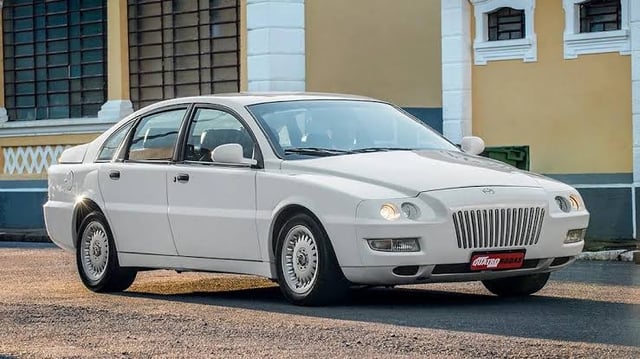
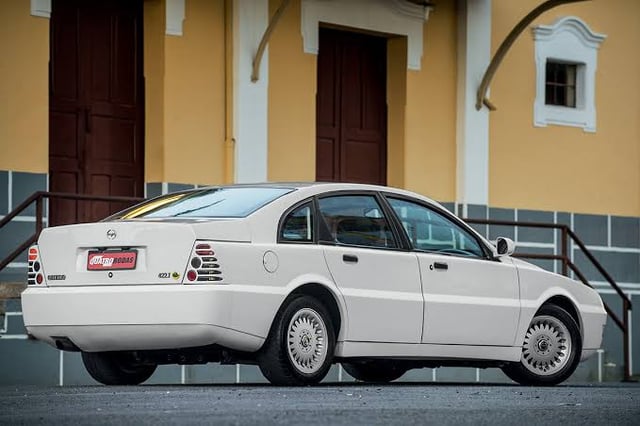
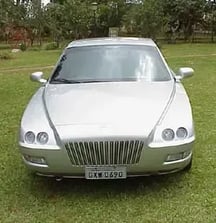
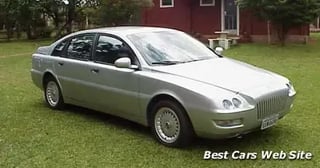
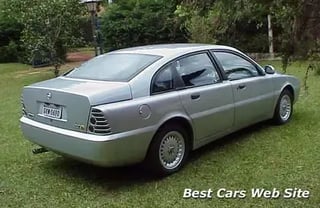
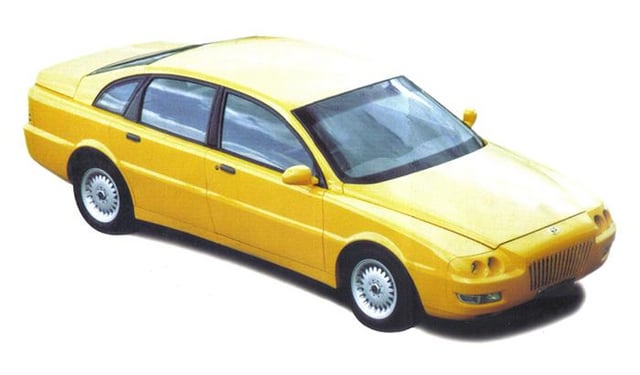
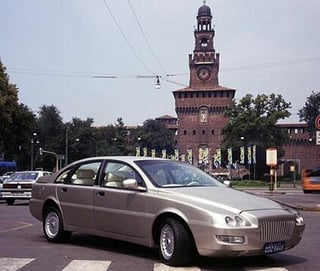
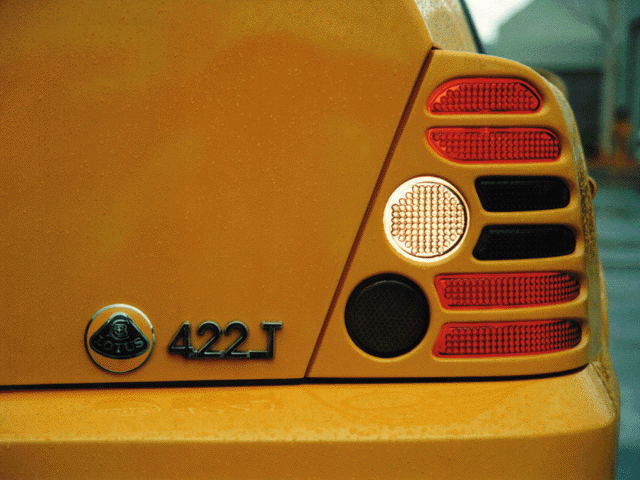
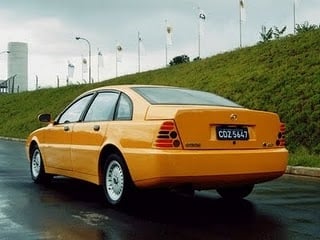
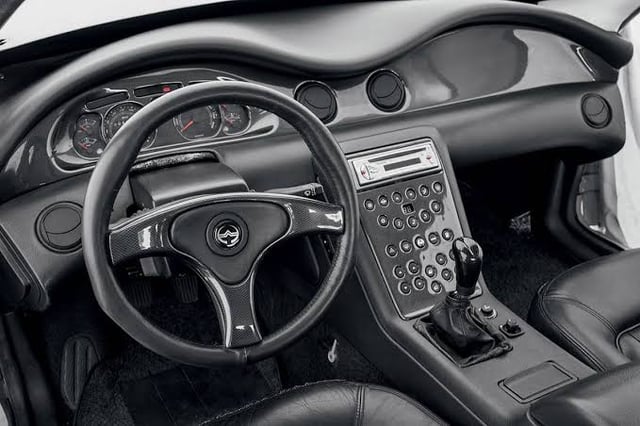
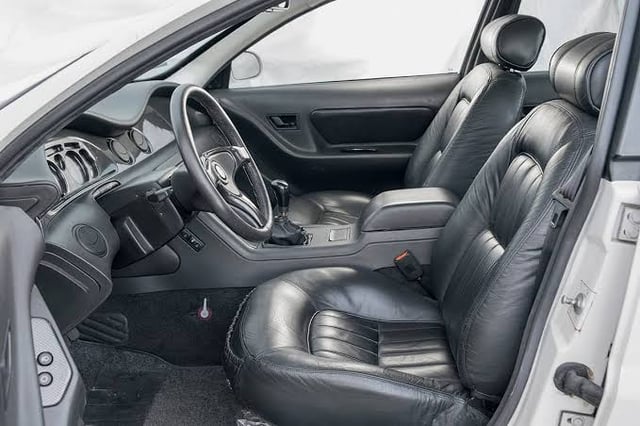
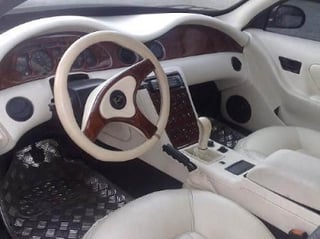
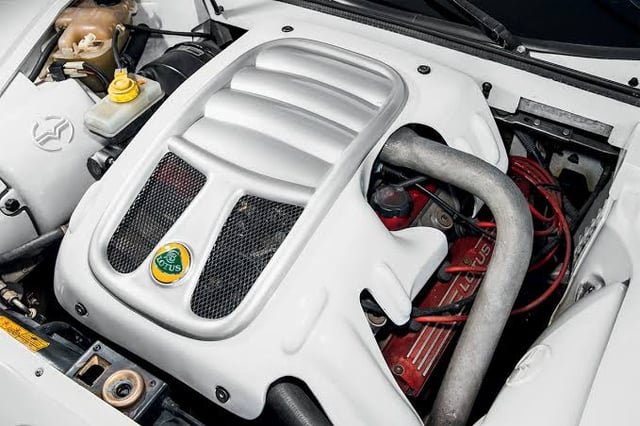
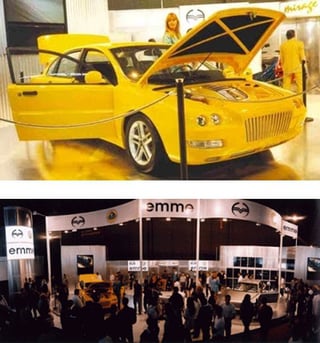
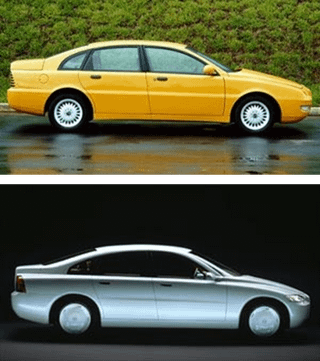
The history of the Brazilian automobile industry is full of curious and unexpected facts, being as rich and diverse as our own country. Even so, one model stands out for its controversial and mysterious history.
This is a model that many people may have never heard of, and its story is somewhat intriguing, not to say “complex”. It all began in 1996 when Fabrício Samahá, then editor of the Best Cars Web Site, saw a dark blue prototype, similar to the car’s current lines, driving around the Paraíba Valley region, more precisely in Pindamonhangaba, in the interior of São Paulo, 150 km from the capital.
A short time later, while working for an automotive magazine, he obtained images of another model, this time gray in color and with blue plates (indicating that the vehicle was being tested by the manufacturer) and published them in December of the same year.
On the back there was a Lotus logo (which at that time belonged to Proton Malaysia, and which today belongs to the state-owned oil company Petronas), thus confirming suspicions that the model used Lotus mechanics.
The manufacturer of this car was Megastar Veículos, which was a business arm of the then-owner group called New Concept Aktiengesellshaft, from Vaduz, Liechtenstein, in Europe, and whose president was Francesco Hurle, who at the time lived in Lugano, Switzerland.
Before that, the factory made scooters that were well-received at first, but with the rise of the dollar in January 1999, they sank along with the Emme project in December of the same year. It was manufactured between 1997 and 1999, in the city of Pindamonhangaba, in the Paraíba Valley, São Paulo, with a nationalization rate of 87%. Some of its parts were imported, but there were plans to nationalize them as well.
Some Lotus technicians even came to Brazil to adapt the engine to Brazilian standards. The construction process used machines that injected 160 molds with just two operators, which allowed a car to be built in just 12 minutes. Mechanically, it has independent suspension on all four wheels, with multiple anchor points, double quadrilateral and torsion bar, and the rear axle has a self-steering axle. Everything was developed in Brazil, except for the powertrain (engine and gearbox, which are imported).
It is said that more than US$ 156 million was invested in the manufacture of the Emme 422T, but according to what was found, the investment barely reached 15 million. Even the city government gave the company incentives, providing land and tax exemptions for a while, but it was all in vain. During the period in which it was in operation, it is estimated that only 12 to 15 units of this car were produced. Its ambitions were great: the factory intended to export some units to Europe to try to compete with the sports sedans there, but because it did not have an adequate safety system, such as ABS brakes and airbags, for example, it was immediately barred from production by EuroNCAP, the European automotive safety agency. The company even drove a prototype on the streets of Milan, Italy, Monte Carlo and Monaco, and then returned to Brazil, all of which is shown in this video: https://youtu.be/kpuykmiesvE
The engine was the same one that equipped the Esprit S4 model, until then considered scrap by Lotus. I’ll tell you why soon…
The body was made of a polymer called VexTrim, patented in Europe, and was similar in size to the Chevrolet Omega.
Its design featured modern details, such as super-ellipsoidal headlights, but its style was far from pleasing the vast majority.
It was available in the 420 and 420T versions, being 4-cylinder naturally aspirated and turbo respectively, and the 422T, of Lotus origin. The code indicated the number of cylinders (4) and the cubic capacity of the engine (2.0 and 2.2, in addition to the “T” for Turbo). They say that the 420 and 420T engines were made at the Emme factory in Pindamonhangaba, but the similarity in the piston diameter and stroke measurements (82.5 x 92.8 mm respectively) and the engine shape were the same as the Volkswagen AP-2000! In the case of the Lotus engines, things are a little worse…
When I said that the engines supplied by Lotus were practically scrap, it’s because they really were, for the most part: besides no longer being of interest to Lotus (since they had developed a 3.5L V8 twin turbo with 350 HP for the then Esprit S4S), the 910S engines with 16 valves and turbo that came, about 10 of them, had the most varied problems, some even with hidden screws! They say that out of 10 engines, only 2 were in perfect condition. That’s when they didn’t have electrical and electronic problems causing a general blackout in the car. Another thing that held the car back was the Borg Warner gearbox from the Ford Mustang V8, which was too long for the Emme. Along with this, there was the problem of Turbo Lag, which is the lack of turbo action at low revs, and this made the car difficult to drive. With 0.8 bar pressure in the turbine, a water-cooled Garret TB03, the car only ran well at high revs. Several components came from different cars: just like the Lotus engine, it also had a PowerLock self-locking Hypoid differential from some Jaguar models, both from England, but it also had components that, surprisingly, came from the “European” Ford Escort (spotlights and turn signals on the bumpers) and even from the then discontinued Chevrolet Opala, among many others. A true Frankenstein!
The disharmonious lines of the body, with a very prominent waistline, are reminiscent of the Volvo ECC (Environmental Concept Car) presented at the 1992 Paris Motor Show, which later became the Volvo S80 in 1998. In other words: both cars were based on the same concept design. Still speaking of the body, this is a part where the headache was the biggest: the plastic parts had no dimensional tolerance. Each molded part was different from another of the same type. There would be no point, for example, in buying a set of taillights to keep in stock because, to install one in place of the other in the event of an accident, it would be necessary to adjust the bodywork, with trial and error before painting. The same happened with the hood, trunk lid and doors. A real jigsaw puzzle!
There was a case of a user from São Paulo who had the front suspension of her car broken on an avenue, without major consequences. And a few months later, an accident put an end to this same Emme, which was considered a total loss by the insurance company. Before the suspension was damaged, however, she only had to complain about the low ground clearance and premature wear of the clutch.
Well before closing down, the factory was already in a bad way. In its last year of operation, it had only 3 employees in the administrative area and only 2 in the factory!
Before closing down, there was a drawing on their website of a mini urban car that they intended to manufacture, but in fact they were drawings of what would be the new Mini that we know today that had been published in some magazines! (Apparently, stealing drawings from other brands was a common thing for Emme).
SPECS
ENGINE: Front mounted, Lotus 910S, aluminum with Nikasil cylinder liners and 4 chromed forged aluminum pistons. Aluminum alloy cylinder head with 16 valves, double overhead camshaft, four valves per cylinder. Water-cooled TB03 Garret turbo with integral wastegate and 0.84 kilos of pressure. Multi-point electronic injection with self-diagnosis knock sensor. Electronic ignition by double coil without distributor. Lotus ECU, prepared for Brazilian fuel
DIMENSIONS: 2,174 cm³
BORE X STROKE: 95.3 mm x 76.2 mm
COMPRESSION RATIO: 8.0 : 1
MAX POWER: 264 HP at 6,500 RPM
MAX TORQUE: 36.1 kgfm or 309.89 Nm at 3,900 RPM
GEARBOX: Borg Warner (from the Ford Mustang), 5-speed synchronized manual, with independent rear transmission and Jaguar PowrLock self-locking hypoid differential.
SUSPENSION
·Front: Independent double quadrilateral, with torsion bar, coil springs and hydraulic telescopic shock absorbers.
·Rear: Independent double quadrilateral and self-steering arm with torsion bar, coil springs and hydraulic telescopic shock absorbers
BRAKES: Dual-circuit servo-brake. Ventilated front discs of Ø11.6″. Solid rear discs of Ø11.6″
CHASSIS / BODY: Tubular chassis in galvanized steel, body in injected plastic veXtrim®
Sports sedan with 4 doors and 5 seats
WHEELS AND TIRES: Light alloy; 15″ 7J rim and Toyo Proxes U1 radial tires. 225/50 ZR 15
DIMENSIONS
Length: 4.62 m (15’1.89″)
Width: 1.76 m (5’9.291″)
Height: 1.40 m (4’7.12″)
Ground clearance: 15 cm (6 in)
Wheelbase: 2.76 m (9’0.66″)
PERFORMANCE
Top speed 273 km/h or 169.7 mph
0-100 km/h or 0-62 mph: 5 seconds
by OriginalPapaya8



![[1993 Ford Mustang 5.0] brand new with original window sticker still on it [1993 Ford Mustang 5.0] brand new with original window sticker still on it](https://www.evshift.com/wp-content/uploads/2024/10/gfl9coi042sd1-770x515.jpg)



7 Comments
sooo many BUTTONS
This is a *wild* bit of automotive history I wasn’t familiar with, thanks for sharing it!
It needs wide body flares, lower door and rocker skirting, a rear lower diffuser, and a lowered more performancey stance.
It should also a dark color, such as black or burgundy.
Go with a larger diameter wheel and lower profile rubber, capped with some Rotiform fan disk style wheels.
The design is strange, but I feel like it’s very workable with accessories. Those sharp straight lines are a good style cue to work with.
Ooogly
Rear looks like a volvo
Someone decided ugly wasn’t ugly enough
Interior lines give slight hint of same era Maserati